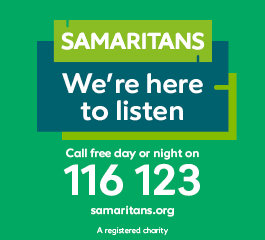What is CBT+? The therapy combining traditional and third-wave approaches
02 April 2019
Michael O'Sullivan is a CBT therapist in the Derbyshire Healthcare Foundation Trust. Here, he interviews Fiona Kennedy, a Consultant Clinical Psychologist who has formulated an innovative therapeutic intervention called CBT+.
Each person who undertakes therapy is on a journey. In starting this journey, we need to think about which therapy will suit us.
If we think about Cognitive Behavioural Therapy (CBT), we need to take into account that it is not one single therapy but three so-called waves.
The first wave is behavioural therapy, used for problems such as phobias. The second wave is about the connection between thoughts, emotions, behaviours, and physical feelings - this is what we might think of as traditional CBT.
Third-wave CBT
Third-wave CBT interventions are relatively new and build on the foundations of CBT; to name a few, they include Compassion Focused Therapy (CFT), Acceptance and Commitment Therapy (ACT), and Dialectical Behaviour Therapy (DBT). Each of these four therapies has their respective strengths.
Given this, it makes sense if the strengths of the four approaches can be blended into one in order to help the person make that journey. One person who has done just this is Consultant Clinical Psychologist Fiona Kennedy.
Fiona has helped developed an approach called CBT Plus (CBT+) which blends standard CBT with the above third-wave CBT therapies. This approach underpins her self-help book 'Get Your Life Back: The Most Effective Therapies For A Better You.'
Intrigued at what her experiences were in bringing these approaches together, I asked her more about the approach:
CBT+ integrates a number of approaches. Before you did this you must have identified common factors between the approaches. What are they?
Fiona Kennedy: All four therapies (CBT, ACT, DBT, and CFT) have good evidence that they are effective, which is not the case for all therapies out there. All of them emphasise the importance of taking new perspectives, which is one reason mindfulness is so central.
They also each use “exposure” that is, learning to approach feared or avoided things, to produce change. Each has ways of developing acceptance of the self and other people, as well as moving forward with courage towards the future. And each has their own take on how to heal past trauma.
Although there may be common factors, these therapies are different from each other. How do you manage to make the approach seamless, so that if I was a client using this approach it would feel seamless rather than fragmented?
Fiona Kennedy: Having a focus on the ‘core processes’ of change, such as the ones outlined above, means we can draw from what each therapy has to offer in making these changes happen for clients and for ourselves.
- See more: 'Transdiagnostic psychiatry': should we prescribe to treat specific emotions, rather than specific disorders?
- See more: Meditation and morality, or counselling and clinical care?
What do you think are the benefits of an integrated approach compared to just a single therapy. Which parts are reached that other therapies do not reach?
Fiona Kennedy: I think new therapies have developed to the point where they are borrowing from each other freely.
Some, like DBT, were developed especially for what were seen as challenging presentations. ACT emphasises values and having a meaningful, purposeful life, as well as how human language can determine the meanings we find in the world. CFT is very strong on developing a compassionate relationship with ourselves and with others. And CBT has the best evidence base of all, with effective interventions for many problems.
Blending them together allows us to use the best available techniques and insights to give our clients the best.
Buy Michael's book "A Practical Guide to Working with Depression: A cognitive behavioural approach for mental health workers" here
"Get Your Life Back: The Most Effective Therapies For a Better You” was shortlisted for the BMA Medical Book of the Year Prize 2018


Comments
Write a Comment
Comment Submitted